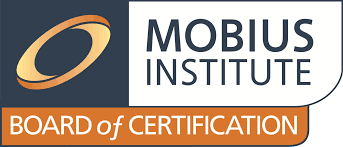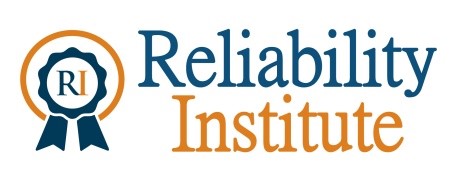MS200 Asset Reliability Practitioner [ARP-A]: Reliability Advocate
The Asset Reliability Practitioner (ARP-A) "Reliability Advocate" course is intended for everyone working within an organization who in any way influence the management, design, engineering, procurement, maintenance, or operation of an organization that involves critical rotating machinery and electrical equipment. It gives the "big-picture" of why unreliability exists, how it creeps into an operation and what the key steps are to eliminate it.
Description
A. Understand why improvement is desired
Introduction
• Overview of reliability and performance improvement
• What causes equipment to be unreliable or perform poorly
• The relationship between reliability improvement and asset management, operational excellence, TPM, and lean strategies
• The relationship between reliability and safety
Benefits
• How does the company benefit
- How to quantify the benefits
- Assessing the current state and measuring the value of the gap
• How do individuals benefit
Reliability culture
• What it means to “think reliable”
• How to contribute to the reliability and performance improvement initiative
- How important it is that you contribute
• How you can help others to understand the benefits
Leadership
• The importance of senior management support
• The importance of leadership throughout the organisation
• The difference between leadership and management (and reluctant obedience)
Strategy
• Why it is important for everyone to understand the strategy
• The importance of the mission and vision statements
• The role of the reliability steering committee
• The importance of contributing to the strategy and offering your ideas and observations
B. Understand why failure occurs
Understanding failure
• Why does equipment fail?
- Mechanical failures
- Electrical failures
• Understanding equipment “failure patterns”
- Does all equipment wear out with age?
- What are “random failures”
- Early age “infant mortality” failures
• Why is this so important?
C. Understand what we can do about it
Defect elimination
• Overview of the goals of defect elimination
• An overview of each of the main sources of defects and how to eliminate them
- Design for reliability, maintainability, operability, and sustainability
- Procurement for lowest life cycle costs
- Transport without damage
- Acceptance testing to reject defective equipment
- Storage to eliminate degradation
- Eliminating maintenance induced failures through precision installation, maintenance and commissioning
- Eliminating operator induced failures
- Proactive tasks that reduce the likelihood of failure and poor performance
Asset strategy
• What is the asset reliability strategy?
• Maintenance/operation options:
- Run-to-failure
- Condition-based maintenance
- Interval based maintenance
• What is involved in developing the strategy
• The need for a master asset list
• The need for a bill of materials
• Asset criticality ranking
• What it is and why it is needed
• In brief, how it is developed
- Maintenance strategy development techniques (in brief)
• An overview of Preventive Maintenance Optimisation [PMO]
• An overview of Reliability Centered Maintenance [RCM]
• An overview of Failure Modes Effects (and Criticality) Analysis [FMECA]
• How can people share their knowledge to improve these processes
Work management
• The benefits of work management
• The basic flow of proper work management
• How people can contribute to improving the work requests, work orders, and work process
- Accurate reporting of failures and work outcomes
• The opportunity to improve work efficiency (or “wrench time”)
• How planning can minimise time/costs with shutdowns and outages
• The role of the computerized maintenance management system [CMMS] or enterprise asset management [EAM] system
Spares management
• The financial and work management benefit of efficient spares management
• Caring for spares
• How people can contribute to the spares management process
Precision and proactive work
• What is precision and the importance of precision work
- The basics of precision shaft and belt alignment, soft foot correction, fastening, machine balancing, and other common mechanical and electrical tasks
- The importance of developing and following written procedures
- The importance of precision installation, such as bearings, seals, gears, belts, pumps, electrical equipment, and other equipment
- The importance of commissioning
• The importance of taking proactive steps to avoid future problems, including precision lubrication, resonance correction, power quality control, and keeping equipment and workplaces clean and organised
Condition monitoring
• Overview of CM principles for mechanical and electrical equipment
• The relationship between CM and planning/scheduling and operations
• A detailed overview of:
- Vibration analysis
- Ultrasound
- Oil analysis
- Wear particle analysis
- Electric motor testing
- Infrared analysis
- Non Destructive Testing [NDT]
- Process/performance monitoring
- Visual inspections
• The future of CM and predictive analytics
Breaking out of reactive maintenance
• An overview of the challenges
• The importance of focusing on breaking out of the reactive maintenance cycle
• Suggested techniques
Continuous improvement
• The principle of and importance of continuous improvement, Kaizen, PDCA, and Lean
• The need to reassess business conditions and what is critical
• Utilising metrics to measure and improve performance
- Benchmarking against industry and the facilities “best day”
- The importance of establishing the right KPIs
- Suggested metrics and KPIs and the most effective use of KPIs
- The importance of accurate data collection
• The importance of constant communication
• Root cause (failure) analysis [RCA and RCFA]
• The importance of conducting RCA/RCFA
- The importance of making the improvements
- How to perform RCA/RCFA
• The need for on-going education, skills, and awareness training
Get Certified!
The ARP course structure is modelled on the ISO 18436 standards with topics mapped to ISO 55000. The optional Certification Exam is provided by Mobius Institute Board of Certification, (MIBoC) which is ISO/IEC 17024 accredited. Students who meet the experience requirements, complete the course and pass the examination will become certified the highest recognised certification in Reliability available anywhere.

Training Partner
SKF delivers the training in collaboration with the Reliability Institute of Australia.

Key Learning Outcomes
• The negative consequences of unreliability
• How to eliminate the sources of systematic defects that cause unreliability
• How to gain management support to resource reliability initiatives
• Strategic maintenance work management as a foundation to reliability
• Why good maintenance and a CM program does not fix reliability problems
• The process of criticality analysis and optimising maintenance activities
• Using data with reliability analysis tools to identify priorities
• Condition Monitoring technologies and their application
• The job roles and resources required to support a reliability program
• How to break away from reactive maintenance and have time for proactive activity
• Sustaining a long-term culture of reliability
Recommended Pre-Study
On-line videos of the course are available to students to allow for study prior to the attending classroom course and exam.